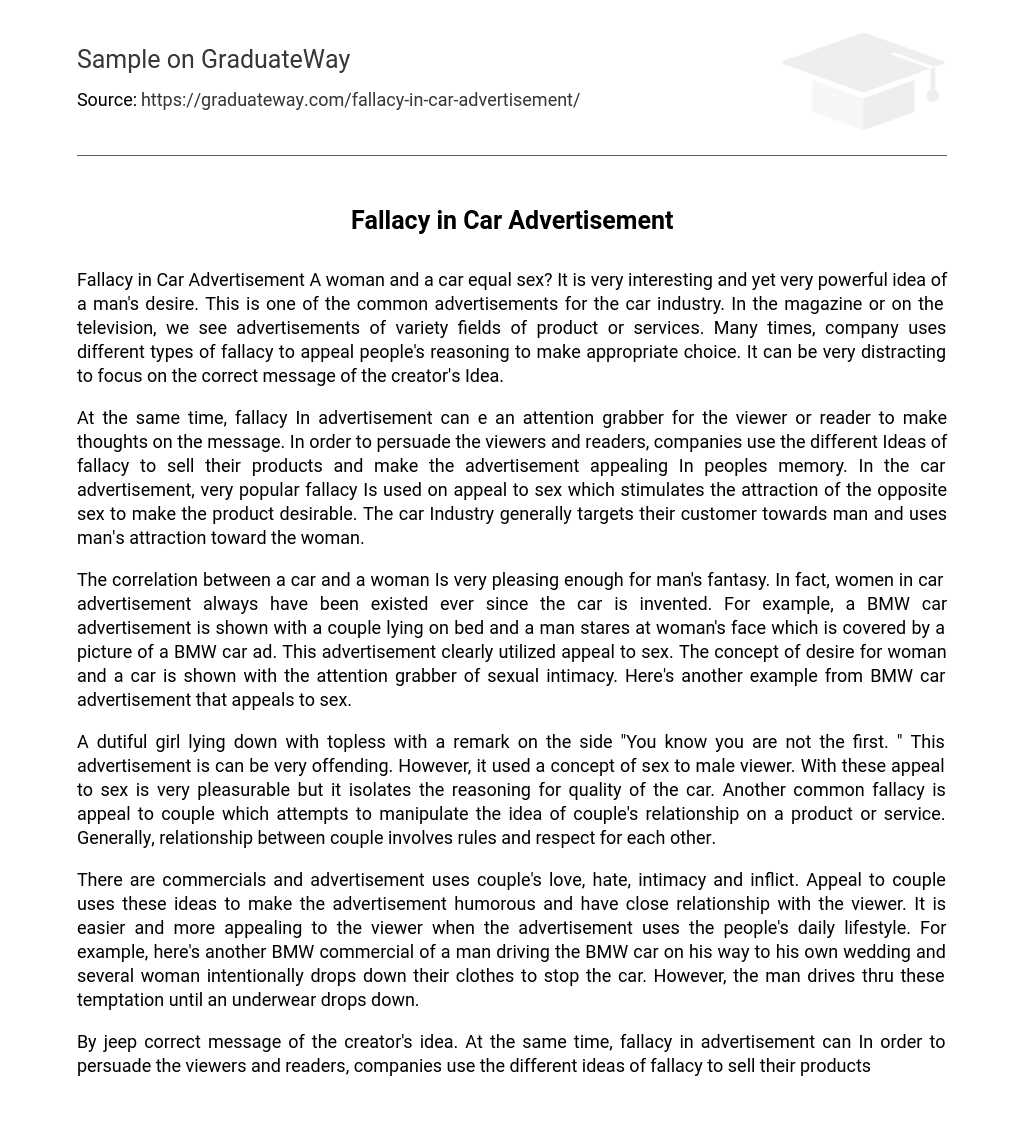The idea of a man’s desire is both fascinating and powerful, particularly in car industry advertisements. Whether in magazines or on television, we are exposed to ads promoting various products and services. Companies often employ fallacies to influence people’s decision-making, making it challenging to discern the creator’s intended message.
Fallacy in advertisement can be an effective way to capture the attention of viewers and readers and influence their thoughts on the message. Companies use various fallacies to persuade and make their advertisements memorable. In car advertisements, a commonly used fallacy is appealing to sex, which aims to create desire for the product by stimulating attraction towards the opposite sex. The car industry typically targets male customers and capitalizes on their attraction towards women.
The connection between a car and a woman is a highly appealing fantasy for men. The presence of women in car advertisements has been prevalent since the invention of cars. For instance, a BMW advertisement features a couple lying on a bed, with the man gazing at a photograph of a BMW car that obscures the woman’s face. This advertisement effectively uses sexual appeal to convey the desire for both the woman and the car. Another example of BMW’s sexual appeal in their car advertisement is as follows.
Using a topless girl lying down alongside a remark that implies she is not the first, this advertisement can be quite offensive. However, it utilizes the concept of sex to entice male viewers. While this sexual appeal may be enjoyable, it detracts from the car’s actual quality. Another common fallacy used is appealing to couples, which aims to manipulate the idea of a couple’s relationship in relation to a product or service. In general, relationships between couples involve rules and respect for one another.
The use of love, hate, intimacy, and conflict in commercials and advertisements targets couples in order to create a humorous and relatable connection with viewers. Incorporating aspects of people’s everyday lives makes the advertisement more engaging and appealing. An example of this is seen in a BMW commercial where a man is driving to his wedding and multiple women intentionally drop their clothes to try and stop the car.
However, the man resists these temptations until an underwear drops down, conveying the correct message of the creator’s idea. Simultaneously, companies use different fallacies in advertisements to persuade viewers and readers, making the advertisement memorable and appealing in people’s memory.
One commonly used fallacy in car advertisements is the appeal to sex. The car industry primarily targets men as their customers and capitalizes on men’s attraction towards women.





